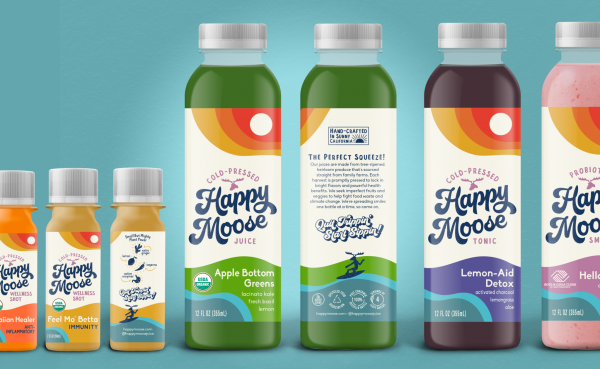
Too Many Claims in the Kitchen: How (and Why) to Curb Your Packaging Claims
April 20, 2021
How many claims can you make about your product?
Organic, gluten-free, nutrient-dense, non-GMO, dairy-free, no artificial flavors, will prevent your toddler from throwing a mealtime tantrum, will keep you awake through your 4:00 p.m. Zoom…
Okay, those last couple were just for fun.
In all seriousness, we know you have a lot to say about your product because we know your product is great. And deciding which claims should go on the front of your packaging can feel like picking a favorite child — you may be tempted to choose all of them.
But we promise that selecting just a few pointed claims aimed at your ideal customer is the way to go. Your customer will feel connected when reading your targeted messaging and run to buy your product.
So yes, we are (sort of) asking you to pick your favorite child. Luckily, we have strategies to help you discern which claims to feature on your final packaging.
More Packaging Claims are Not Merrier
You may be wondering why you can’t just put all of your claims on your packaging. After all, you want to cast a wide net, attracting every kind of shopper. But, no matter how counterintuitive it seems, here’s the reality: The more you say, the less shoppers hear.
Today’s consumers have short attention spans. If your packaging is cluttered and wordy, they simply won’t read any of it. Cluttered packaging also looks dated and is hard to follow. Consumers’ eyes might wander, searching for something to focus on. And if there’s too much to focus on, they may just move on to the next product.
Worse yet, your brand could come off as inauthentic or untrustworthy if your packaging is crowded with claims. We know your claims are all true. But if you spout off 10 benefits on the front of your packaging alone, consumers might dismiss it all as, well, bull.
Your Food Product Packaging Claim Options Explained
If you can’t put everything on your packaging, what should you pick to feature? There are four categories of claims you can choose from to create your perfect on-package blend:
- Differentiator claims. What makes your product different from the rest of the products in your category? Cheerios, for example, differentiate themselves in the saturated cereal category with their “can help lower cholesterol” assertion.
- Benefit claims. Why do consumers need your product? What will it do for them? If it really will calm their toddlers’ mealtime tantrums (we can dream), that’s a rock-solid benefit claim. Or maybe it’s full of vitamin D, getting them through the winter months sans sun.
- Feature claims. These are informational claims that outline facets that are unique and specific to your product. Are your ingredients free from synthetic dyes? Are they sourced locally? Note that feature claims can also serve as differentiators.
- Trend-based claims. Warning: These claims are temporary. As the name suggests, they rise and fall with passing fads. Currently, the food and beverage industry is brimming with keto-friendly products, for instance. Ingredients can also be trendy, like probiotics.
As a general rule, we recommend selecting no more than three claims for the front of your product’s packaging. Others can go on the back, or get the axe completely. Also, your claims can be any combo of the four categories above.
The Right Balance of Claims Starts with Research
Selecting the right cocktail of claims from these options is a balancing act. You need some reassuring claims that will comfort consumers and prove to them you belong in your category. Like organic in the health food space. But you also need some cutting-edge claims that will make you stand out in an aisle (or six) of organic options.
As you’re conducting research, analyze personality types within your target consumer market. What motivates your ideal customers ? Leverage that intel to inform your claims cocktail.
Don’t Go Overboard with Feature Claims
Choose feature claims sparingly and wisely. When possible, feature claims should be translated into benefit claims.
Let’s say your product contains lion’s mane mushrooms, which enhance focus. It’s awesome that your food item uses a unique ingredient, but does the average consumer know that lion’s mane mushrooms help with focus? Do they even know what a lion’s mane mushroom is?
Your claim should be the benefit: focus. Not the feature: an obscure type of mushroom.
Draw Customers to Your Top Packaging Claims with a Communication Hierarchy
You can use a communication hierarchy to not only narrow down your claims selection, but to organize the claims on your packaging for maximum impact.
A communication hierarchy is the order in which a shopper takes in information about your product and brand. It’s not necessarily top-to-bottom or left-to-right. Rather, it’s what elements jump out to the shopper based on prominence and visibility. Maybe your logo jumps out first, or a gluten-free seal, or your color scheme.
You should take advantage of the communication hierarchy to guide shoppers through your packaging claims. Then, they’re left with a clear picture of your brand and compelling reasons to buy your product. Exactly as you planned.
Choosing Your All-Star Claims
To successfully employ a communication hierarchy, you need to choose your number one claim. Your head honcho. The product’s most vital facet that you want shoppers to latch onto right away. That’s the claim you’ll position most prominently on the front of your packaging — the cornerstone of your communication hierarchy.
As mentioned, a good rule of thumb is to include no more than three claims on the front of your product’s packaging. Relegate the rest (to a point — you may need to cut some completely) to the back.
The good news is that, if your number one claim does its job, shoppers will be compelled to continue reading about your product. They will take in those other two front panel claims and (fingers crossed) move on to the back, too.
Another tip: You don’t want to identify your most valuable claims incorrectly, reading your audience all wrong. Test them by conducting an online research study and ask your target audience for their opinions on which claims are most important to them.
Happy Moose: A Communication Hierarchy in Action
The juice category is jam-packed. Selecting claims that differentiate one juice from another is an especially difficult task.
That’s why, when Happy Moose came to us to optimize their packaging, we knew we’d have to hone in on their top claims to grab consumers’ sought-after attention.
But selecting their primary claims was no easy task. Their juice and wellness shots are fantastic — full of potential benefits to tout. To add to the challenge, their wellness shots are physically small, leaving little real estate to feature claims.
Ultimately, our communication hierarchy for Happy Moose zeroed in on the brand essence: spreading good vibes. The ingredient profile comes in second in the hierarchy. Working closely with local farms, they utilize unique combinations of tree ripened, freshly pressed, imperfect, heirloom fruits and vegetables to create truly exceptional quality and flavor. However, we captured that as a feeling tone, rather than making each claim.
The design of Happy Moose’s packaging — the color scheme, the typography, the imagery — it all supports their claims and brings the brand essence to life.
Here’s the bottom line. There’s a lot we could’ve said about Happy Moose products. This example shows that, even in the most difficult cases, the communication hierarchy comes through. Now, Happy Moose has a beautiful, modern aesthetic to clearly highlight its most compelling selling points.

We’re Here to Help
You know your product best.
The GRO Agency simply complements your product-specific knowledge with our deep industry knowledge. By keeping our finger on the pulse of the industry, we can guide you to select claims that speak to your product’s unique value, but also work within the larger market. And, to further inform your packaging design, we can either facilitate research for you or analyze research you’ve done in-house.
We’d love to help you hone in on your product’s most powerful claims so you can break through in your category.


